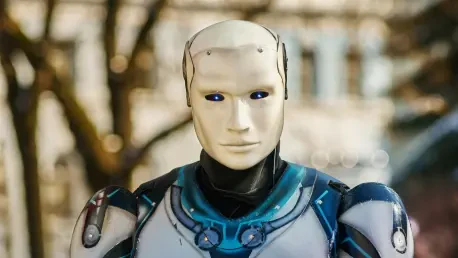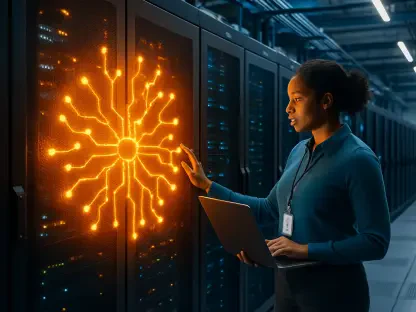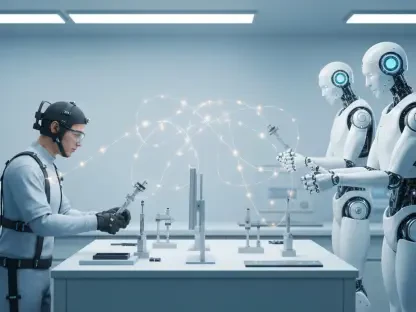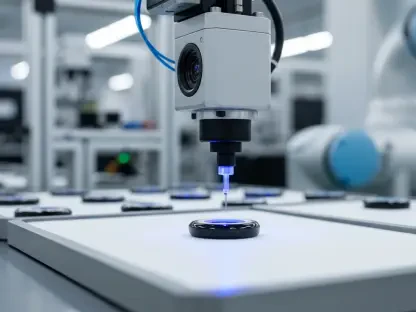Envision a world where robots seamlessly interact with their surroundings, intuitively navigating spaces while comprehending the intricacies of environmental cues as people do. This is not just a dream but a formidable challenge facing the robotics industry today. The question remains whether these mechanical beings can ever attain a level of spatial understanding comparable to humans.
Bridging the Spatial Knowledge Gap
At the heart of this concern lies the intricate nature of spatial reasoning, a critical aspect of both human cognition and robot functionality. Effective communication and task execution in robotics hinge on the ability to decode spatial relationships—identifying how objects relate to one another spatially. Yet, despite significant advancements, robots today still grapple with spatial perception, lagging behind their human counterparts.
Spatial reasoning is vital as societies increasingly rely on automation and integrate AI into daily life. Whether through autonomous vehicles finding optimal routes or robotic arms precisely managing inventory in a warehouse, understanding spatial dynamics is essential. However, robots encounter hurdles in deciphering spatial relationships crucial for executing tasks independently.
Vision-Language Models: A Key to Progression
Vision-language models (VLMs) emerge as pivotal in advancing the spatial understanding of robots. These conjoint models synthesize visual (image) and linguistic (language) data to enhance spatial intelligence. Still, the complexity of merging these data types has its trials. Task examples showcasing the necessity for robust spatial reasoning abound, from navigating complex terrains to deftly handling intricate objects.
Although the vision-language models demonstrate adeptness in handling isolated visual or textual tasks, they fall short in spatial reasoning. The challenge lies in integrating these modalities effectively, paving the way for robots to better interpret spatial cues and interact harmoniously with their environment.
Insights from Researchers and Emerging Innovations
Leading scholars like Professors Agnieszka Wykowska and Patric Bach illuminate brighter paths in AI research. Their collaborative efforts, notably under projects such as FAIR*, highlight cutting-edge discoveries in vision-language model capacities. Teams from institutions like IIT and the University of Aberdeen contribute significantly, propelling the potential for spatial understanding in AI.
For instance, a project at FAIR* uses synthetic environments to train models on spatial tasks—aided by experts and advanced tools. This approach not only accelerates learning capabilities but also enhances the practical usability of AI solutions in real-world applications.
Pathways to Human-Like Spatial Comprehension in Robotics
Strategic methodologies may hold the key to bridging the spatial understanding chasm between humans and robots. Employing synthetic data generation and 3D scene descriptions offers practical pathways to this end. As real-world deployment becomes plausible, simulations provide vital preparation grounds, paving the way for robots to carry out human-like spatial tasks effectively.
Moreover, crafting realistic simulations has begun bridging the divide between theoretical models and tangible, actionable results. These controlled environments offer profound insights, catalyzing further AI developments.
Charting Future Directions in AI-Driven Robotics
Recent advances underscore that achieving human-level spatial understanding in robots involves evolving beyond current theoretical limitations. Moving forward, a focus on improving realism within these virtual environments remains paramount. By translating these insights into actionable strategies, robots could thrive in diverse applications, from industrial settings to everyday social interactions.
Reflecting on the progress made, the path ahead highlights harnessing this knowledge to prompt substantial AI improvements. As simulations inch closer to reflecting real-world complexities, forging pathways toward innovatively deploying AI systems becomes the overarching goal. The journey to match human-like spatial intelligence remains ongoing, promising a future where machines and humans coexist more naturally.









